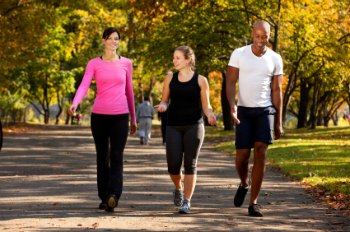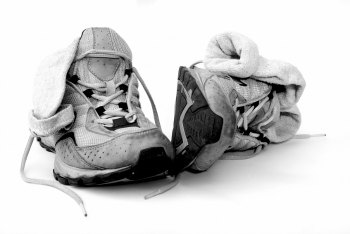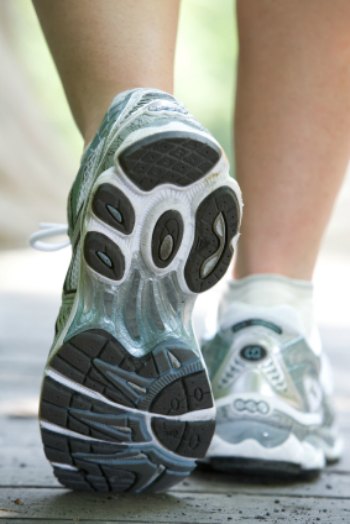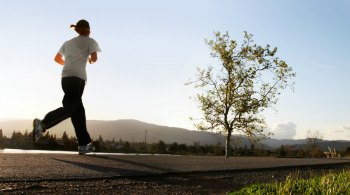Exercise for Weight Loss & Fitness
New to Exercise?

Beginners Start Here
All you really need to do is put one foot in front of the other to get started.
Advertisement
Don't Want to Go to the Gym?
How to Exercise At Home
You don't need a gym membership to work out and get fit. You can easily work out from home. Find out how...
- 10 Ways You CAN Exercise At Home without Any Equipment
- 10 Ways to Exercise While Watching TV
- How To Get Your Rear In Gear
- How to Work Out Safely At Home: Important Rules to Follow
- 3 Ways to Motivate Yourself to Work Out at Home
- 7 Fun Ways to Exercise At Home
- How to Create Your Own Home Gym
- 3 Things to Consider Before Buying a Workout DVD
Workouts
Find ways to work out smarter -- and harder.
Too Busy to Work Out?
All About Abs
One Simple Ab Exercise You Can Do Anywhere and Anytime -- Even in a Room Full of People
There's one ab exercise you can do while grocery shopping, giving a presentation at work, sitting on the bus, walking down the street - really, anywhere, anytime.
More About Abs

What are Weight Training and Strength Training?
Weight training -- also known as strength or resistance training -- focuses on building and strengthening your muscles by using resistance.
Aim for 2 to 3 strength training sessions per week, lifting weights heavy enough to fatigue the muscles (or a few reps before). Beginners can start with one set of 8 to 10 exercises that covers all the muscle groups: legs, hips, back, abdomen, chest, shoulders, and arms.
More About Weight Training
FAQ
How Often Should You Exercise?
When it comes to weight loss you may have wondered how often to exercise. Do you have to work out every single day, or should you allow a day or two of rest in between? And does it differ when you're doing cardio workouts or weight training workouts?
Walking for Weight Loss & Fitness
Walking is one of the easiest ways you can start incorporating fitness into your life and make progress towards your weight loss goals. It's easy to do and very low impact, making it a great option for almost everyone.
5 Important Tips for Working Out In the Heat
Did you know that the most stressful environment to exercise in is a hot and humid environment? The problem is that your body can't cool down properly when it's humid. When that happens the chance of heat exhaustion or heat stroke becomes very real. If you're overweight, unfit or older you may be even more heat-sensitive. And all that heat puts an extra strain on your heart.
More About Exercising Outdoors
Glossary
What is Cardio Exercise?
Also known as cardiorespiratory training or cardiorespiratory exercise, cardio exercises focus on getting your heart rate up from its normal resting state. This not only strengthens the function of the heart and its ability to deliver oxygen from the lungs to the rest of the body, but it burns extra calories you wouldn't normally burn if you were at rest.
Walking, biking, and running are good examples of cardio exercises. Cardio usually involves moving the large muscle groups, such as the legs. Aim for 2 hours and 30 minutes (150 minutes) of moderate-intensity aerobic activity (i.e., brisk walking) every week.
More About Cardio
Tips and Strategies
Explore awesome tips and strategies to not only start exercising but to keep exercising -- and do it more effectively.
Yoga for Flexibility (and Strength)
Yoga exercises help you strengthen your body, make it more flexible, calm your mind and give you energy.
Advertisement
Glossary
What are Stretching Exercises?
Stretching exercises helps elongate the muscle and connective tissues and can help relax muscles after exercising.
When your body is flexible, you're able to have complete range of motion, making it easier to move your body, whether you're exercising or performing everyday tasks, like reaching up to a high shelf.
Keep your body flexible by performing stretching exercises before and after exercise. You can also stretch at other times by doing yoga or stretching on your own (make sure you warm up first). It's a key element that people forget. Strength without flexibility can lead to injuries.
How Often Should You Stretch?
Stretch at least 2 to 3 times a week minimum and up to 5 to 7 times a week, ideally. Stretch all muscle groups for 15 to 30 seconds per rep. The ideal time to stretch is right after a cardio workout.Numbers to Explore
Want to Start Running?
It's no secret that running is a highly beneficial form of exercise. It provides a great workout for weight loss, toning and cardiac health. But many of us can't run across the front yard without getting winded. This often leads to the mistaken belief that we just can't be successful runners.
The truth is, almost anyone who can walk can run for exercise.





